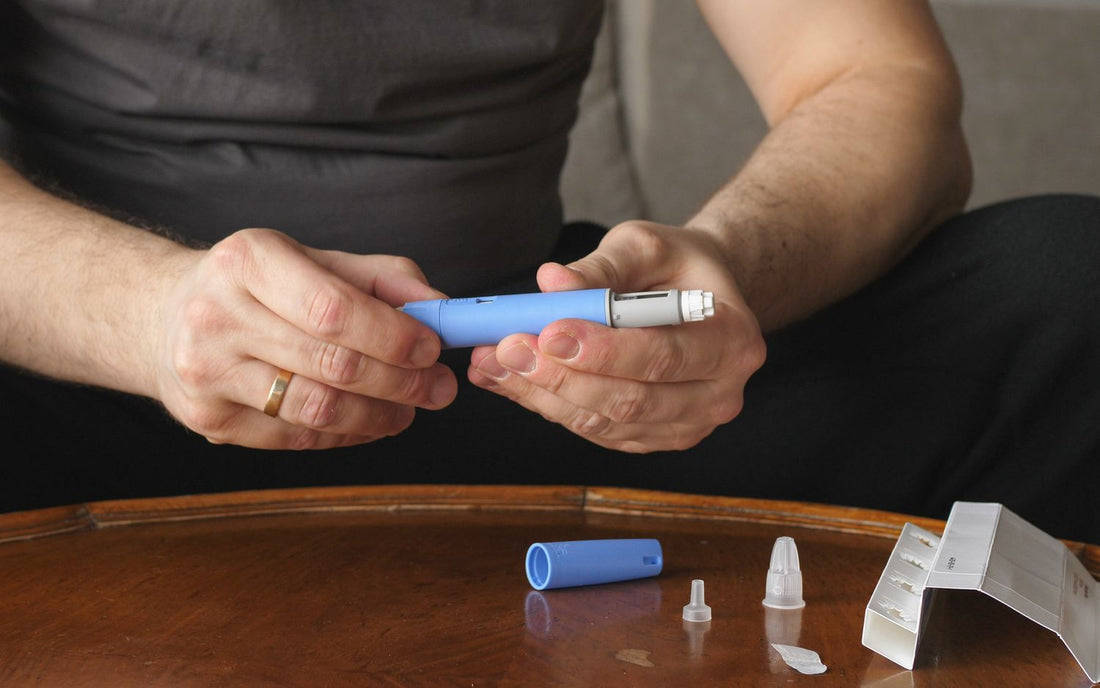
How GLP-1 Medications Affect Nutrition: What You Need to Know
GLP-1 receptor agonists—such as semaglutide and tirzepatide—are transforming the way people manage weight and type 2 diabetes. By suppressing appetite, slowing digestion, and regulating blood sugar, these treatments make it easier to achieve sustainable fat loss.
But while GLP-1s are powerful tools, they also change the way you eat—and how your body processes nutrients. Understanding these changes is essential for protecting long-term health, preserving muscle, and preventing nutrient deficiencies.
How GLP-1s Change Eating Patterns
Because GLP-1s work by reducing appetite and slowing gastric emptying, most people naturally eat less. While this supports weight loss, it can also lead to:
- Lower protein intake → risking muscle loss
- Reduced calorie consumption → helpful for fat loss, but too low can trigger fatigue or nutrient deficiencies
- Fewer micronutrients → vitamins and minerals may be missed simply because less food is eaten
- Digestive changes → nausea, constipation, or bloating may affect food choices
Key Nutritional Considerations on GLP-1 Therapy
1. Protein: Guarding Against Muscle Loss
Muscle is vital for metabolism, strength, and long-term weight management. With smaller appetites, it’s easy to skimp on protein.
- Target: 1.2–1.6 g per kg body weight per day
- Tip: Spread protein evenly across meals (e.g., eggs at breakfast, chicken or tofu at lunch, fish or beans at dinner).
2. Fiber: Keeping Digestion Moving
GLP-1s slow the gut, which can lead to constipation. Fiber helps regulate digestion, supports satiety, and improves blood sugar stability.
- Target: 25–30 g daily
- Sources: Vegetables, berries, oats, legumes, chia seeds
3. Micronutrients: Small Appetite, Big Needs
Less food means fewer vitamins and minerals. Some nutrients to watch:
- Vitamin D & Calcium → bone and muscle health
- Magnesium → energy and digestion
- B vitamins → metabolism and nerve function
- Iron → energy and oxygen transport
A high-quality multivitamin may help fill the gaps.
4. Healthy Fats: Don’t Cut Too Low
Appetite suppression sometimes pushes people toward overly restrictive eating. But healthy fats are essential for hormone balance, brain function, and absorption of fat-soluble vitamins (A, D, E, K).
- Sources: Olive oil, avocado, fatty fish, nuts, seeds
5. Hydration: More Important Than Ever
GLP-1s can alter digestion and bowel habits, increasing the importance of hydration. Aim for steady water intake throughout the day, and consider electrolyte support if appetite or fluid intake is very low.
Supplements That Can Help
Some people find supplementation useful while on GLP-1 medications:
- Protein powders or essential amino acids → for those struggling with protein intake
- Omega-3s → for heart and brain health
- Creatine → to help preserve strength and muscle mass
- Multivitamin/mineral → to cover reduced food variety
The Bottom Line
GLP-1 medications reshape not only appetite but also nutritional needs. While they make weight management more achievable, they also increase the risk of under-eating protein, fiber, and key micronutrients. By being intentional with food choices—and using smart supplementation where needed—you can maximize the benefits of GLP-1 therapy while protecting long-term health.
Weight loss is only one part of the journey; maintaining strength, energy, and nutrition is what makes success last.
